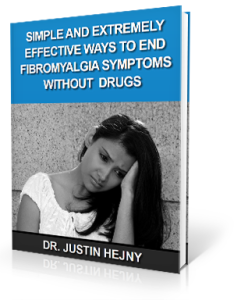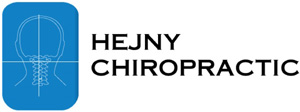 Fibromyalgia (FM) is a chronic condition known for causing widespread pain and tenderness throughout the body and extreme fatigue. FM affects both males and females, but women are more likely to get it than men. In fact, up to 90% of those diagnosed are female, according to the National Institutes of Health.
Fibromyalgia (FM) is a chronic condition known for causing widespread pain and tenderness throughout the body and extreme fatigue. FM affects both males and females, but women are more likely to get it than men. In fact, up to 90% of those diagnosed are female, according to the National Institutes of Health.
Some men get diagnosed because they experience fibromyalgia differently than women. Women usually have more severe pain than men. This could be blamed on hormones, genetics, or immune system differences. However, it is yet to be discovered why women get FM more than men do. Let’s look at some ways that women have more intense pain with fibromyalgia.
Table of Contents
Stronger Menstrual Pain in Women with Fibromyalgia
Women experience menstrual cramps at differing levels. However, those with fibromyalgia seem to have more painful periods than usual. The pain may even change depending on their cycle. Women with fibromyalgia are usually in the age range of 40 to 55 years. The symptoms of fibromyalgia may be worse in women who are going through or even past menopause. Menopause with fibromyalgia increases the following:
- Soreness
- Anxiety
- Crankiness
- Achiness
After menopause, a woman’s body produces 40 percent less estrogen. Estrogen is responsible for serotonin levels, which control pain and mood. It is good to be aware that some of the symptoms of fibromyalgia imitate symptoms of perimenopause, such as:
- Depression
- Pain
- Lack of quality sleep
- Trouble with memory or thinking ability
- Tenderness
Another thing to be aware of is that women with fibromyalgia also often have endometriosis. This is when tissue from the uterus grows in other parts of the pelvis. FM can make this condition much more painful.
To learn more about the connection between head and neck injuries and fibromyalgia, download our free e-book by clicking the image below.
Tender Points and Fibromyalgia
Fibromyalgia pain is often described as a dull or deep ache that begins in the muscles and moves to other parts of the body and is often accompanied by a pins and needles feeling. In order to be diagnosed, you must have pain in all parts of your body, on each side, and on the lower and upper extremities. The pain may be intermittent and can be much worse on one day than another, making it hard to plan any routine activities.
Both men and women experience FM pain differently. They both report having an intense level of pain at one point. But, men seem to report an overall lower pain severity than women. Women suffer more all-over pain for longer periods of time than men. Pain may be stronger in women because estrogen levels decrease pain tolerance.
What Tender Points?
Tender points are specific areas in the body (usually near the joints) that hurt when they are pressed or touched. There are 18 possible tender points for fibromyalgia. Interestingly, women report around 2 more tender points than men do. These include:
- Insides of the knees
- Between the shoulder
- Back of the head
- Top of the chest
- Top and sides of the hips
- Front of the neck
- Outside the elbows
Tender points may also appear in the pelvic area. If these occur for more than 6 months, it is referred to as chronic pelvic pain and dysfunction (CPPD). The achiness from this can begin in the back and run down the thighs.
Increasing Bowel and Bladder Problems in Women with FM
Other issues related to CPPD can become worse, such as irritable bowel syndrome and bladder problems. This can increase your risk of developing internal cystitis (painful bladder syndrome or PBS). Around 32% of people with IBS also have PBS. This can cause:
- Painful urination
- Pressure on the bladder
- An increased need to urinate often
- Pain during intercourse
- Pain and cramps in the lower abdomen
Women with Fibromyalgia Are Depressed and Fatigued
Studies reveal that women with fibromyalgia have higher levels of depression than men. Other conditions that coexist with fibromyalgia can cause you to lose out of vital sleep. These include sleep apnea and restless leg syndrome. This can contribute to tiredness and depression. It may impact your ability to concentrate and make you tired during the daytime. Lack of proper sleep can also lead to an increased sensitivity to pain.
Other Symptoms of Fibromyalgia
The following symptoms affect both women and men with fibromyalgia:
- Headaches and migraines with nausea and vomiting
- Sensitivity to drops in temperature, bright lights, and loud noises
- Trouble concentrating and remembering called fibro fog
- Pain in the jaw area
- Restless leg syndrome — defined as a creepy, crawly feeling in the legs that awakens you
Finding Proper Care for Fibromyalgia Symptoms
As you can see from the above information, fibromyalgia has a huge impact in almost all areas of your life. Therefore, finding a way to ease symptoms is a top priority. Some have found that a change in their diet can help. Getting rid of artificial sweeteners, increasing your intake of protein and foods rich in iodine (such as seaweed), and drinking more water can all help the body deal with the issues presented with fibromyalgia.
Here at Hejny Chiropractic in Spring Lake Park, Minnesota, we understand how a misalignment of the upper cervical spine can exacerbate and even trigger the symptoms of fibromyalgia. The brainstem is protected by the bones of the upper neck, the C1 and C2 vertebrae. This area of the neck, however, is very vulnerable to misaligning due to its ability to allow the head to turn in so many different directions. A simple blow to the head or a trip and fall can cause these bones to misalign. When they do, the brainstem comes under pressure and it begins to send faulty signals to the brain about what is happening in the body. For example, with fibromyalgia, it may tell the brain there is pain when there is actually very little or no pain at all.
We use a gentle method that encourages the bones to move back into place on their own. We do not have to resort to cracking the neck or popping the spine to get positive results. The technique used is called Atlas Orthogonal and has been seen to bring good results to those with fibromyalgia. Some have seen their symptoms improve greatly, while others see their condition go into remission completely.
To schedule a complimentary consultation with Dr. Hejny, call our Spring Lake Park office at 763-230-0116. You can also click the button below.
 If you are outside of the local area, you can find an Upper Cervical Doctor near you at www.uppercervicalawareness.com.
If you are outside of the local area, you can find an Upper Cervical Doctor near you at www.uppercervicalawareness.com.
